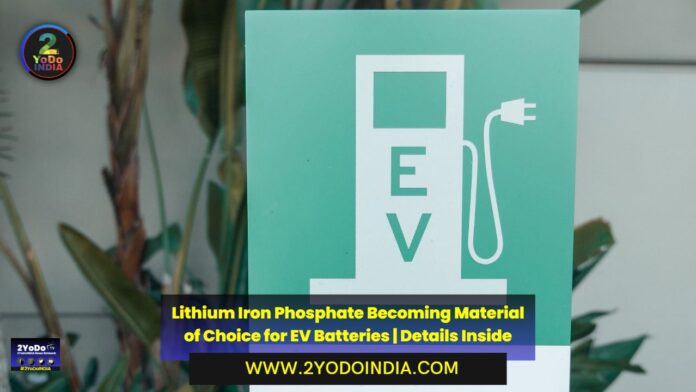As the auto industry to produce more affordable electric vehicles, whose most expensive components are the batteries, lithium iron phosphate is gaining traction as the EV battery material of choice.
The popularity of the chemical compound known as LFP is due partly to environmental and geopolitical concerns.
But technological advances have also reduce the performance gap with more widely use materials such as nickel and cobalt.
LFP, embrace by EV industry leader Tesla two years ago, has spark new interest especially in the US, where a clutch of domestic and overseas manufacturers has pledge more than $11 billion (approx. Rs. 90,200 crore) in new production facilities.
Two of the world’s largest automakers, Toyota Motor and Hyundai Motor, have both announce plans in the past week to equip their future vehicles with LFP batteries, but have not disclose plans for the US.
As LFP is less expensive than cobalt and nickel, and all the minerals can be obtain in North America which is much lower transportation costs and a more secure supply chain.
The addition of manganese, a staple ingredient in rival nickel cobalt manganese (NCM) battery cells, has enable lithium iron phosphate cells to hold more energy than previously, providing EVs with more range, up to 450 miles (724 km) on a single charge, as per Toyota said.
Tesla is among the automakers leading the quest in markets outside of China to provide lower-price EVs in Tesla’s case, targeting a base price of around $25,000 (approx. Rs. 20 lakh).
The use of LFP batteries should help Tesla and rivals to achieve that goal, as per experts.
Ford Motor aims to open a $3.5 billion (approx. Rs. 28,700 crore) LFP cell manufacturing plant in western Michigan, leveraging technology license from China’s CATL, the world’s largest EV battery maker.
The goal, Ford CEO Jim Farley said in February 2023, is to lower the automaker’s cell costs to less than $70 (approx. Rs. 5,800 crore) a kilowatt-hour, from more than $100 (approx. Rs. 8,000)/kWh for current NCM cells.
More than 90% of LFP materials and components still come from China, said battery expert Shirley Meng, a University of Chicago professor and head of Argonne National Laboratory’s Collaborative Center for Energy Storage Science.
The rapidly increasing adoption of LFP by EV manufacturers including Tesla and Hyundai suggests those companies “are not ready to decouple from China,“.
Rising investment in LFP manufacturing facilities in the United States is coming not just from domestic companies like Ford and ONE.
Battery makers from Norway, Israel, South Korea and even China have commit to building US facilities to produce LFP materials, components and batteries, some of which will be use not in vehicles, but in large energy storage systems.





